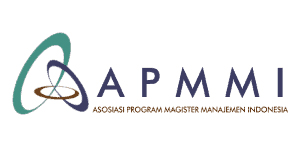Analysis of Traditional Market Revitalization in Increasing Regional Income in Kupang City
DOI:
https://doi.org/10.30996/jmm17.v11i1.8512Abstract
This study describes the conditions of traditional markets about market conditions in the city of Kupang. This study aims to explain how traditional market revitalization increases local revenue (PAD) in the city of Kupang. The research method used is the mix method. The data analysis method used is SWOT analysis. The results of the study show that there is a relationship between traditional market revitalization and an increase in regional income. There are several markets that until now have not been properly paid attention to by the government including the love market and the fatubation market where the condition of the love market still uses local people's land or places to be used as a place for buying and selling transactions because the market cannot accommodate traders and the land area is not possible, so the government has not taken action or revitalized the love market due to a lack of levy revenue. So it is necessary to immediately revitalize traditional markets in the city of Kupang. Revitalization that must be considered is in terms of physical, economic, social and management because most of the traditional markets in Kupang City have not been revitalized properly, therefore the Kupang city government must be able to take advantage of market potential. Because the potential for regional income to be obtained after the revitalization will be very large and enormous. The potential includes parking management, fees,. With the revitalization of traditional markets, it is expected to increase regional income.
Downloads
Downloads
Published
How to Cite
Issue
Section
License
Authors who publish to JMM17: Jurnal Ilmu Ekonomi Dan Manajemen agree to the following terms:
- Authors transfer the copyright and grant the journal right of first publication with the work simultaneously licensed under a Creative Commons Attribution-ShareAlike 4.0 International License.. that allows others to share the work with an acknowledgement of the work's authorship and initial publication in this journal.
- Authors are able to enter into separate, additional contractual arrangements for the non-exclusive distribution of the journal's published version of the work (e.g., post it to an institutional repository or publish it in a book), with an acknowledgement of its initial publication in this journal.
- Authors are permitted and encouraged to post their work online (e.g., in institutional repositories or on their website) prior to and during the submission process, as it can lead to productive exchanges, as well as earlier and greater citation of published work (See The Effect of Open Access)












